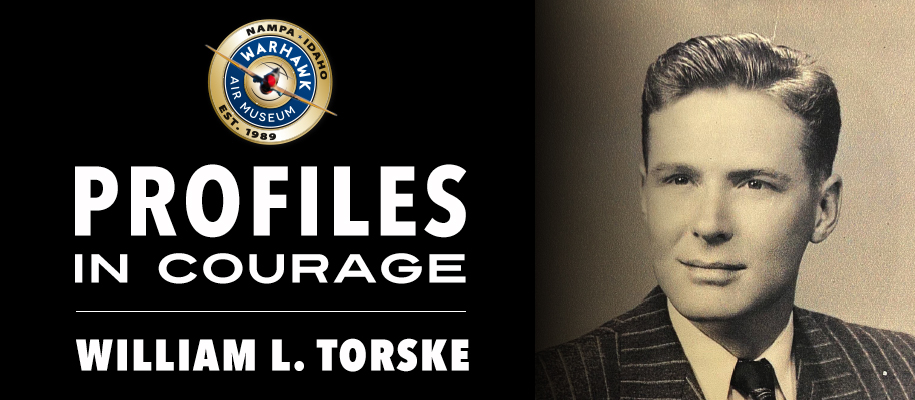
Posted On: July 22, 2021
It’s December 3, 1944, and the Second Bombardment group of the 15th Air Force is on their way from Italy to bomb Linz, Austria to smithereens. First Lieutenant William “Bill” L. Torske, the bombardier, gears up as he prepares to drop bombs weighing more than a ton. The Second Bombardment Group was a crucial and dominant player in the success of the 15th Air Force. The crew dodges the incoming German flak one after another, missing their B-17 by a hair. All four bombardment groups assigned to the mission to Linz successfully hit their target and focus on returning back to base. Bill, relieved after completing yet another successful mission, is forced back into fighting mode as their flying fortress is hit from all sides with German anti-aircraft fire. As Torske peered out the front of the B-17 he realized the only way it was making it back to earth was with a great explosion. Torkse darted for the escape hatch hoping to make it out all in one piece. His adoring Betsy prayed for his safe return day and night, but it would be months before Bill was brought home to Betsy, a changed man.

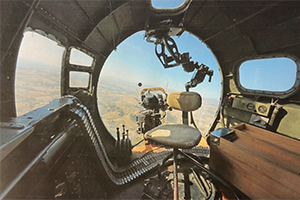
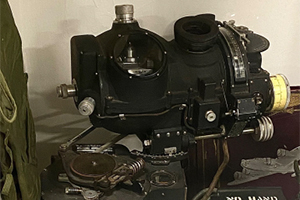
Life in the Stalag

As his plane fell from the sky, Bill parachuted out landing on solid ground. His relief from escaping harm’s way faltered quickly as Bill and his flight crew were captured by the Germans. They were transported to Stalag Luft 1 in Barth, Germany, a prisoner of war camp, where Merle Culp, Dwane Beeson, and Emmett Murphy (other Veterans whose collections are also found within the museum) resided. He was starved for three days by the Germans who used food to control the POWs. Weakened men were not inclined to escape. Eventually, they were given three potato skins and half a cup of tea to sustain them. German prisoner rations were poor, but thankfully the Red Cross mercifully made up some of the difference. Bill writes to his dearest Betsy about his thanks for the Red Cross, “Write as often as you can and send some parcels. Also buy an interest in the Red Cross. They are doing wonders.”
During his time at Stalag Luft 1 boredom was prominent and thoughts of home were constant. Bill attempted to escape multiple times with comrades he had made. They dug a tunneling system underneath the camp chipping away at the unstable sand that could cave in at any moment. The Germans, however, had sensors to detect any type of escape. Each attempt was met with a near-death experience. The Germans would blast water through fire hoses into the entrance of the tunnels. Some, however, were not so lucky as to be met with fire hoses. While in camp, Bill became very close with another airman from the Royal Air Force who was brutally shot in the head on Good Friday. Bill was standing right next to him and was covered in brain matter and blood. That horrific event traumatized Bill, leaving him deeply burdened for the rest of his life.
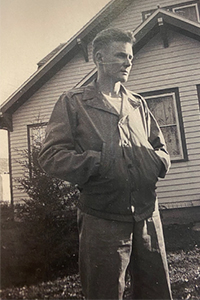
During this same time, Bill’s family received a false report that he had died at Stalag Luft 1 without any detail of how or when—just that he was gone. His wife, mother, father, and brother spent days scrambling for information, hoping to understand what had happened to their husband, son, and brother. On April 12, 1945, the family received a correction to the report and that William L. Torske was still alive.
May 1, 1945, saw the liberation of prisoners of war in Stalag Luft 1 as the deteriorating German army could no longer hold off advances made by the Russians. But the newly-liberated men still faced plenty of dangers outside of the camp. The war was still raging, with snipers, mines, and the threat of being misidentified as an enemy by the Americans or Soviets. Many of the men feared they would be taken to Siberia or not allowed to return home. The language barrier made their concerns and confrontations all the more difficult. On May 8, 1945, the war ended in Europe.
A changed man
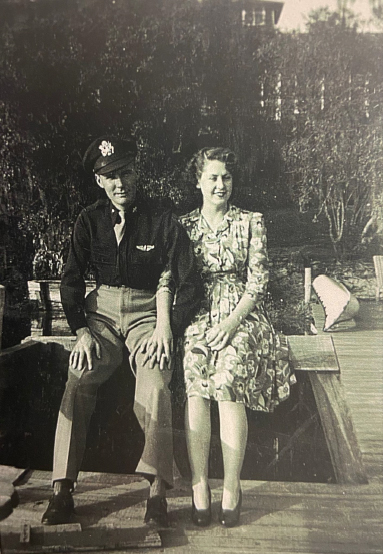
At last, the physical terror was over and Bill came home to his loving Betsy and to the land he fought for and prayed to see once again. The aftermath of the war affected Bill in ways which only a veteran could understand. He was still the loyal, honest, altruistic man everyone loved, but Easter always reminded him of the murder of his British friend. He grew to dislike guns and hunting as they reminded him of the war, and some things were too unbearable to speak of. Bill and Betsy eventually moved to Idaho and had two children, a daughter named Sharon and a son named William. In their best years, the couple would go fishing and camping every chance they got as they enjoyed spending time together outdoors. Bill was deeply loved and never asked for anything in return. William “Bill” L. Torske passed away peacefully on March 16, 2002, in Idaho Falls. His display case is located within the museum in area 2 cabinet 181.
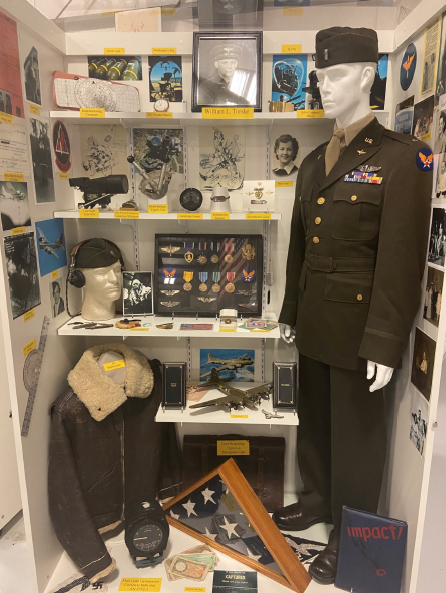
Come visit the Warhawk and explore Torske’s memorabilia and hundreds of other equally inspiring stories.




Always enjoy these stories and look forward to the next ones.
We can never repay the debt we owe to the men and women who have fought and suffered for our country. The horrors they endured after being captured by the enemy including the physical and emotional pain are beyond imagination. As if that wasn’t enough, those that lived returned changed people and some suffered for the rest of their lives. The families who were so happy that they got their loved ones back saw the changes firsthand and they suffered as well.
Keeping their stories alive and seeing the memorabilia is so very important. Future generations must know exactly what it took to keep America free. The democratic way of life that they enjoy is a direct result of what people like Bill & Betsy went through. They paid for that freedom with everything they had.
To the personnel at the Warhawk Air Museum, thank you for doing just that!